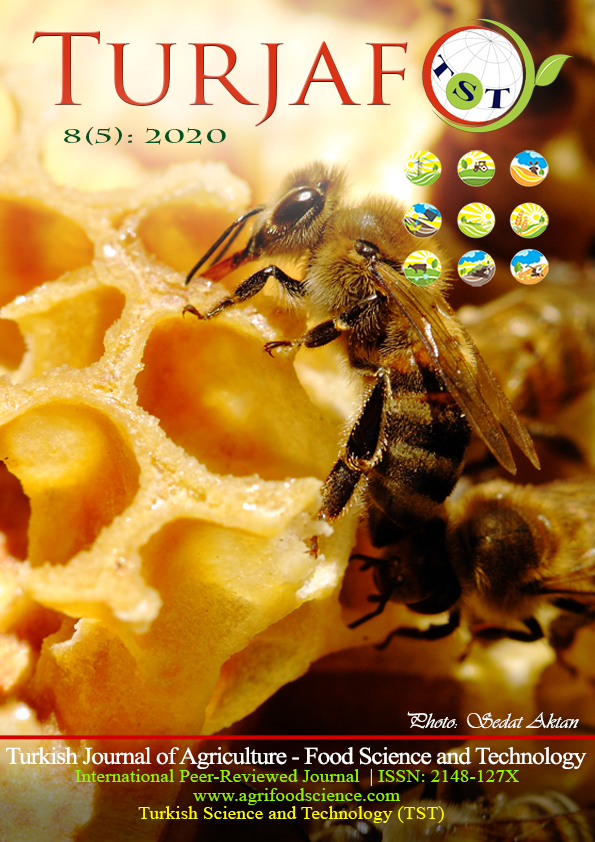Evaluation of Physical Properties of Microencapsulated Olive Stone Antioxidants and Kinetic Modelling of Their Storage Stability
DOI:
https://doi.org/10.24925/turjaf.v8i5.1145-1153.3328Keywords:
Kinetic modelling, Microencapsulation, Polyphenol, Bulk properties, Olive stoneAbstract
The aim of this study was to determine the water activity, color, particle properties, bulk properties and reconstitution properties of microencapsules obtained from olive stone antioxidants, and to investigate the changes in polyphenol and antioxidant contents by kinetics modeling after storage of microcapsules in three different temperatures as -20°C, 4°C and 25°C for 6 months. It was observed that the microcapsules had a water activity value of 0.43, a bright light yellow color with low redness and inhomogeneous hollow particles. It was determined that they had hygroscopic (32.47%) and high caking properties (61.32%), their wettability (52 min) and dispersibility (34.44%) were low and they exhibited suitable bulk (0.26 g/cm3) and tapped density (0.33 g/cm3) values. The flowability (CI: 22.65) and cohesiveness (HR: 1.29) behaviors of the microcapsules were acceptable. In addition, it was found that the changes in polyphenol and antioxidant contents (except surface polyphenol content and microencapsulation efficiency) during storage were best explained by first-order kinetic model. Kinetic coefficients (reaction rate constant (k), half time (t1/2) and Q10 value) of all compounds examined at each storage temperature were calculated. Preservation of polyphenol and antioxidant contents of microcapsules during storage was found to be best at 4ºC and worst at -20°C. It is thought that microcapsules obtained from olive stone antioxidants are especially suitable for use in order to increase the functionality and extend the shelf life of the foods stored at 4°C.Downloads
Published
23.06.2020
How to Cite
Nakilcioğlu Taş, E., & Ötleş, S. (2020). Evaluation of Physical Properties of Microencapsulated Olive Stone Antioxidants and Kinetic Modelling of Their Storage Stability. Turkish Journal of Agriculture - Food Science and Technology, 8(5), 1145–1153. https://doi.org/10.24925/turjaf.v8i5.1145-1153.3328
Issue
Section
Research Paper
License
This work is licensed under a Creative Commons Attribution-NonCommercial 4.0 International License.









